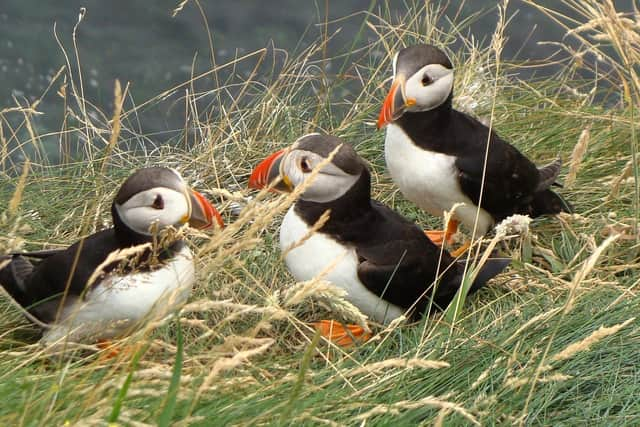Concerns soar for Scotland’s seabirds in face of deadly new threat - Helen McLachlan
These are internationally important populations. For example, at last count, 60% of the world’s breeding population of great skuas (bonxies) was found in Scotland.
Sadly, many of our seabirds have suffered huge declines over recent decades. Between 1986 and 2019, numbers of 11 species of seabirds have halved and puffins were moved to the red-list – a category reserved for species most in need of help.
Advertisement
Hide AdAdvertisement
Hide AdMany of our seabirds already face a battle for survival because of multiple threats caused by people: climate change, unsustainable fishing, invasive non-native species, entanglement in fishing gear and poorly positioned offshore energy developments.
Now they are facing a new threat from a deadly disease known as Highly Pathogenic Avian Influenza (HPAI).
Avian Influenza circulates in wild bird populations naturally. However, HPAI, appears to be a more recent phenomenon and it’s having unprecedented impacts. Last winter HPAI devasted numbers of barnacle geese in the Solway with estimates of a loss of more than a third of the world’s Svalbard population.
This spring, Scotland’s globally important seabird populations are bearing the brunt and fears are that the long-term impact on these species could be much more severe. Seabirds are long-lived, take longer to reach breeding age and tend to produce fewer offspring so high adult mortality could have much more significant impacts on future numbers. And, many are already in trouble.


So far there are reports of thousands of dead gannets and many hundreds of dead great skuas. Each day the numbers increase and along with them the species that are potentially being affected too.
The impact of this virus is fast becoming part of everyday life for many people in Scotland too with carcasses washing up on popular beaches.
So, what can we do? As individuals, we can make sure we don’t touch any dead birds and report them as soon as possible to the DEFRA helpline 03459 33 55 77. We can also try to take even more care than normal to not disturb nesting birds.
RSPB Scotland is also calling on the Scottish Government and NatureScot to develop a national Response Plan for HPAI in wild birds – including immediate measures that could be taken in the current situation. The plan should include effective monitoring, better testing and carcass collection, biosecurity and minimising disturbance to protect wild birds during outbreaks and better co-ordination between measures for domesticated and wild birds.
Advertisement
Hide AdAdvertisement
Hide AdWe also want the Scottish Government to go faster and further to ensure we urgently tackle the other threats that our struggling seabirds face.
There has been some progress. We were delighted back in February when they announced the designation of two Special Protection Areas in Orkney which completed a set along with 12 others announced in 2020.
But, it was a long process to get there and if this Spring’s devastation teaches us anything it is that we must move faster. We need the upcoming Scottish Seabird Conservation Strategy to be highly ambitious and result in real change at sea as soon as possible.
Helen McLachlan is the Head of Marine Policy for RSPB Scotland
